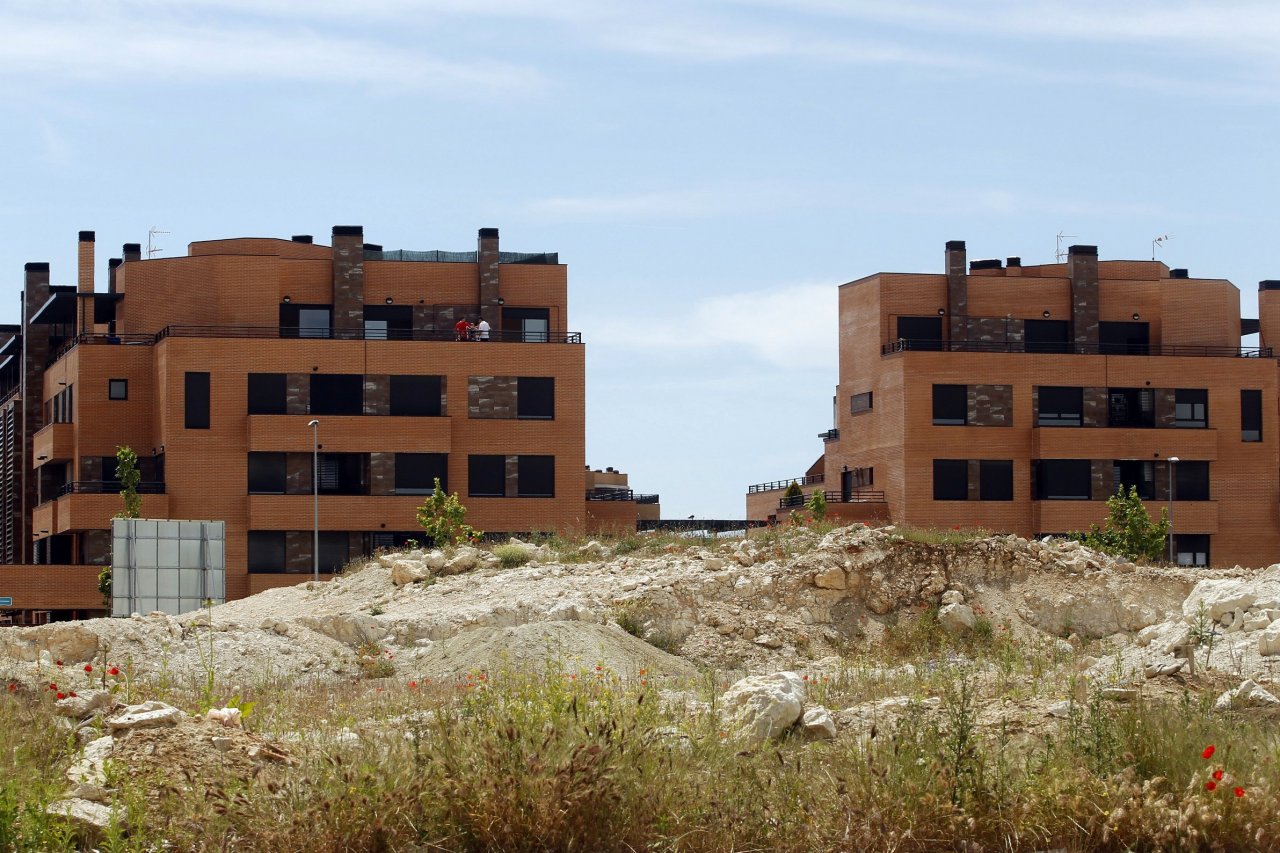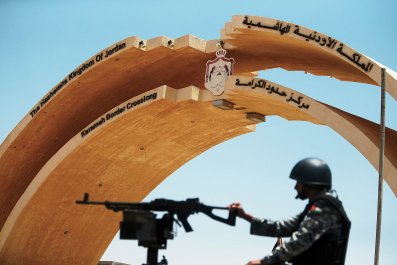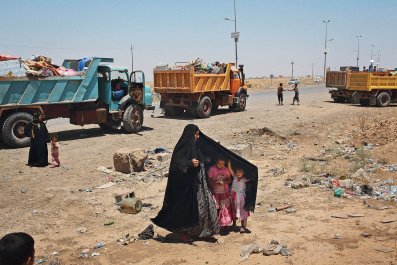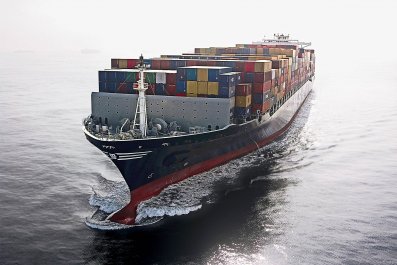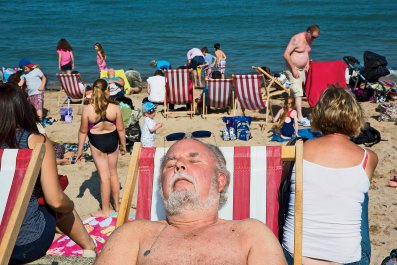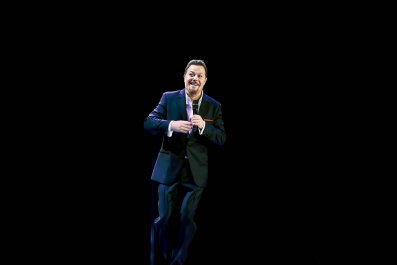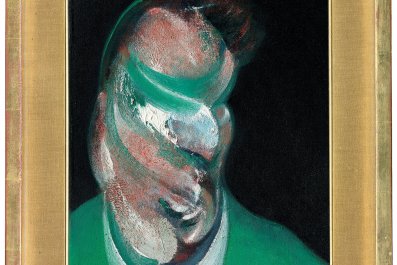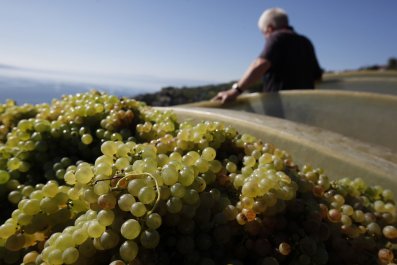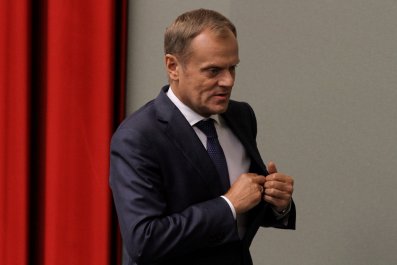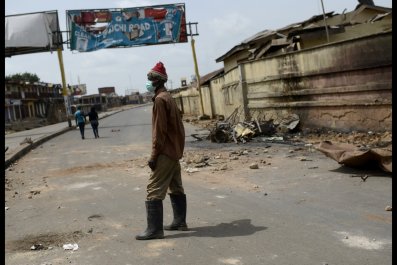The first thing you notice in Valdeluz, Spain is the wind. It meets no resistance as it blows hard and loud across empty lots where apartment blocks were meant to stand. Roads that appear on Google Maps go nowhere and have no names. Some 40 miles from Madrid, Valdeluz was conceived at the height of what is sometimes called Spain's economic miracle. In a Catholic nation, whose faith has declined substantially during its three decades of democracy, there is an increasing reluctance to believe in miracles of any kind.
Spain's economic crisis now feels so deep, lasting and all-pervasive, it's hard for many to recall how different the atmosphere was during the economic boom. A huge influx of immigrant labor, tourists and expatriate house buyers after Spain joined the European Union in 1986, and the launch of the euro, in 1999, helped the economy to soar. After decades of backwardness, Spain opened its cultural riches to the world, and the world came to visit: It is second only to the United States in revenue from international tourism.
Spain could not stop building. At its peak in the 2000s, construction made up 19 percent of the Spanish economy, and fat paychecks lured teenagers away from school to the building sites of developments like Valdeluz.
The crash that followed looks less like a hangover than a catastrophe that will last a generation. Shock has given way to resignation: "We will just have to learn how to be poor again," one young indignado (outraged) told me. In May, Prime Minister Mariano Rajoy celebrated a drop of 110,000 in unemployment, which sounds like great progress until you realize the jobless rate is still 25.9 percent, youth unemployment is still a staggering 57.7 percent, young graduates are leaving in droves.
The Spanish crisis is not only hurting an entire people, it threatens to harm the rest of the continent too. Spain has the fifth largest economy in the EU and the 13th largest in the world—if it sinks further, or is forced to abandon the euro, it may take the whole Eurozone with it.
Yield for Tumbleweed
The plans for Valdeluz give a clue to the hubris that characterized the boom years. When Spain's high-speed train network announced in 2004 that it would be building a stop near Guadalajara on the much-travelled Barcelona-Madrid route, it was decided to build an entire town of 30,000 people on the back of it.
The construction giant Reyal Urbis invested $1.6 million in the construction of Valdeluz—it would be their "jewel in the crown," a dormitory town utopia 15 minutes from Guadalajara and less than an hour from Madrid—a place for the comfortable middle-class to rest and play and raise their children amidst lush greenery, away from the dirt, grime and clutter of the capital.
The environment would be tailored to a master plan for better living: No home would be more than 200 yards from the nearest "green zone," and the town would have the best sports facilities, schools, leisure facilities and transport. Valdeluz—"the valley of light"—would even have its own golf course. This, said the dreamy rhetoric on Reyal Urbis's website, was going to be the future of housing.
Construction began in 2006. The grid of streets was marked in the arid dirt; the roads were paved, street signs and lamp-posts erected, and parks were finished. But only the first of the four phases of apartment blocks—2,200 of the 9,000 planned homes—were finished when the economic crisis hit in 2008. At that point, the utopian town intended for 30,000 of Spain's flourishing bourgeoisie had barely 200 people living in it. Photographers and news crews from across Europe came to photograph the tumbleweed.
"Valdeluz is not a pueblo; it's an urbanización," explains Raul, a cabdriver. His distinction is important—an urbanización is a self-contained suburban building project. The word pueblo, meaning a town or a people, carries connotations of having a collective identity, a spirit, a personality. It sounds like a cutting jibe—but most residents of Valdeluz echo the idea. Valdeluz has actually grown in population since the first properties went on sale and house prices fell through the floor in 2008: from 197 that year to 726 in 2010, 1,717 in 2012 and 2,459 inhabitants today.
In that time, one man has positioned himself as the captain of an ambitious rescue mission to turn Valdeluz from a ghost town into a "hope town." Mayor Joaquín Ormazábal has seen the crisis from both sides, moving to the town in 2007 while still working in Madrid as a lawyer for the banking conglomerate Bankia, which, in 2012, requested and received the largest government bailout in Spanish history—$25 billion. Ormazábal was elected as an independent town councillor in 2011. Later that year he resigned from Bankia to take over the Valdeluz mayoralty.
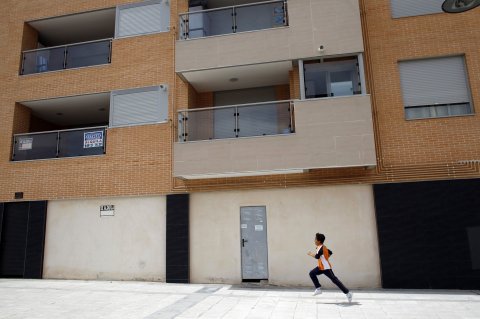
I tracked him down in Valdeluz's snazzy, multi-colored indoor sports center—one of the few state-of-the-art public facilities here that has been finished. About 150 residents were watching a man in a blond perm wig and waistcoat do magic with goldfish to the sound of Daft Punk's Get Lucky. The act was going down well. It was part of the town hall's third annual Spring Festival—five days of theatre, storytelling, music and performance, a kind of social stimulus package, a government injection of collective cultural life.
Ormazábal's favorite story about Valdeluz concerns the large sign that greets the town's few visitors: it reads "Cuida Valdeluz." "You know the Spanish verb cuidar, 'to care for'?" he says. "Some of the children here came to me and suggested that instead of Ciudad [city] Valdeluz, our sign should say Cuida [to care for] Valdeluz. That is the spirit we are going for—to create a sense of community, and a sense of place, out of all these problems. I will fight to create a new spirit of Valdeluz—open-minded, optimistic, collective. I want spirit, not ghosts."
Ormazábal bought his three-bedroom flat in Valdeluz in 2007 for $325,000—it is now worth about $135,000—and it is these plunging prices that have brought new residents to the town. Most house prices have fallen by 50 to 60 percent in the town—while the remaining developable land has fallen by 80 percent.
As the screaming children threaten to drown out our conversation, Ormazábal breaks into English and raises his voice above the din: "Tell me, is this a ghost town?" Those children will make or break the town in the years to come, he explains; some 34 percent of the population of Valdeluz is under 18. Ormazábal gives me a wry smile and says, "Really, they should call it 'Fucking Town.' These people never stop having kids."
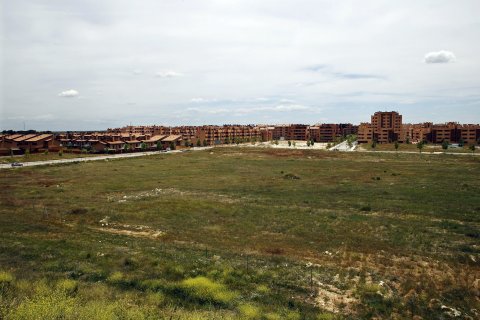
Don't Wake the Dogs
In Café Moon one Sunday morning, the regulars sat at the marble bar and dunked churros in their coffees. A sports car roared past outside, eliciting a moment of awe and derision. Valdeluz's empty streets draw a lot of boy racers. The proprietor, Yolanda Alvarez, sat at the end of the bar. I showed her an issue of the lavishly produced magazine produced by Ormazábal's office, with an article where the mayor was boasting of an increase in population of 283 people in 2013, going on to blame the regional government for "strangling" possibilities for future development in the town. Was this fair? She shrugged.
"It's complicated, but a lot of the problems in the town are with the mayor, not the government," she says. "A school is the most important thing right now, along with public transport—there are so few buses. I'm probably the only person in Valdeluz who can get to work without a car! Meanwhile, the kids are so bored, there's nothing for them to do for fun, so they stay inside." Yolanda's teenage daughter has taken to working shifts in the bar. "Without a car, to drive to Guadalajara, you have nothing," she says.
Does she like living here? "It's quiet. But it's too quiet," she says. "You don't have much choice about whether you like the quiet—or whether you live here. No one will ever be able to sell without losing a large amount of money."
Other customers asked not to be named when sharing their pessimism—one pensioner, who in 2009 bought with his wife, joked bleakly that he had bought his final home. "I don't see how I'll be leaving Valdeluz alive, not now," he says.
In the completed quarter of Valdeluz, alarm and security signs are prominently displayed, along with numerous "For Sale" and "To Rent" signs. The Caja Madrid bank branch has closed down and had its ATM removed, though a branch of Santander remains, along with a couple of food shops and cafés, a hairdresser's and little else. It is the bricked-in shop fronts at eye level that suck the social life out of the city; a reminder of the thriving middle-class town that was meant to be. Demographically, this is a town of the comfortable middle class—most of the residents work in Madrid. But Valdeluz's still half-built school lies amidst rubble. Even unfinished, the school is colossal—it was to be the largest in the province. Instead, like Yolanda, most Valdeluz parents now send their children to school in Horche, three miles away.
The houses in Valdeluz are pleasant enough—clean, well-appointed, many with balconies overlooking communal patio squares and swimming pools, onsite gyms and car parks. "Our house is very nice," a young father in his 30s called Paco says, "but you know, the inside is not everything. A casa in isolation from a community is not a castle, but a hutch."
As a "samba reggae army" marched around the normally empty streets, the drums spooked an Alsatian dog, whose barks echoed around the Avenida de Maria Moliner. The dogs aren't used to the noise, Paco laughed. A Spanish parade through empty streets was poignant—it is supposed to be disrupting ordinary life in the name of a fiesta.
A handful of people came briefly to their balconies to watch the unusual activity—namely, any activity—before returning inside. It was a racket almost like thunder, but it worked, and by the finale 150 or so people had gathered in the main square, about a third of them children, playing on their bikes and skateboards. There were prams and dogs and young parents galore. Sunlight sparked off the beer glasses and expensive watches, and the chatter was of holidays, cars and schools—Valdeluz is not a poor town; it is a middle-class community sold out by the crisis.
Occasionally, a high-speed train whistles past the town like a bullet—a taunting reminder of the muddled thinking that led to the building of Valdeluz. So few trains stop at its ghost station that at some times of day it would be faster to take the train 300 miles to Barcelona and back to Madrid, to get to the capital. Unsurprisingly, commuters from Guadalajara have chosen to pay $5 for a 45-minute regular-speed journey to Madrid, rather than drive 15 minutes to Valdeluz, park, and pay $23 for a 30-minute journey. "There's no logic to any of it," Ormazábal says of the station. "Why they built it is still a mystery to me."
Dan Hancox is the author of The Village Against the World.


